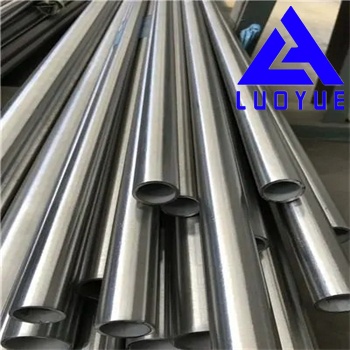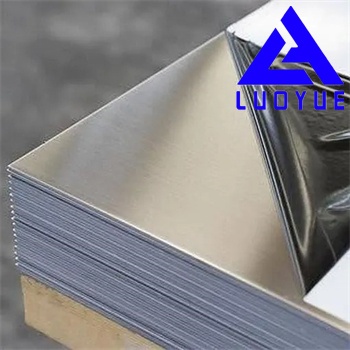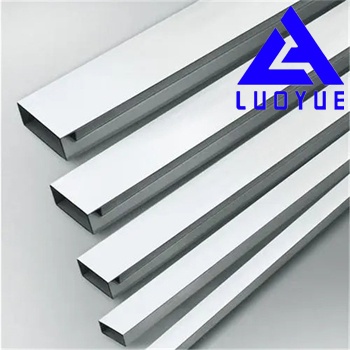





What is Stainless steel 2304?
Alloy 2304 (UNS S32304) is a 23% chromium, 4% nickel, molybdenum-free duplex stainless steel. The Alloy 2304 has corrosion resistance properties similar to 316L. Furthermore, its mechanical properties, i.e., yield strength, are twice those of 304L/316L austenitic grades. This allows the designer to save weight, particularly for properly designed pressure vessel applications.
General Properties
Alloy 2304 is a 23% chromium, 4% nickel, molybdenum-free duplex stainless steel. The Alloy 2304 has corrosion resistance properties similar to 316L. Furthermore, its mechanical properties, i.e., yield strength, are twice those of 304/316 austenitic grades. This allows the designer to save weight, particularly for properly designed pressure vessel applications.
The alloy is particularly suitable for applications covering the -50°C/+300°C (-58°F/572°F) temperature range. Lower temperatures may also be considered but need some restrictions, particularly for welded structures.
With its duplex microstructure and low nickel and high chromium contents, the alloy has improved stress corrosion resistance properties compared to 304 and 316 austenitic grades.



Processing
Hot Forming
Hot forming must be performed in the 1150/900°C (2100/1650°F) temperature range. After forming, a new solution annealing treatment is recommended in the 950°/1050°C (2100°/1650°F) temperature range to fully restore corrosion resistance properties and mechanical properties. Parts formed with 2304 must be supported carefully during heating to avoid creep deformation.
Cold Forming
Alloy 2304 may be cold formed without any problem. The same equipment as used for the cold forming of 304L and 316L grades can be used. Due to its higher mechanical properties, including the yield strength, higher stresses are required for cold forming. A final solution annealing heat treatment is also recommended after cold forming in order to restore the mechanical and corrosion resistance properties, as decribed in ‘hot forming.’
Descaling
Use the same solutions and pastes as for Alloys 304L/316L. The pickling time will be higher than for austenitic grades due to the corrosion resistance properties of the alloy.
Machinability
The mechanical properties of stainless steel grade Duplex 2304 are displayed in the following table. Equivalent materials to stainless steel grade Duplex 2304 are given below: Machining of stainless steel grade Duplex 2304 is performed at low speeds, and constant feeds help to reduce its tendency to work harden.
Alloy 2304 duplex exhibits improved machinability properties particularly when considering drilling. Its behavior is equivalent to that of 316LEZ*. Furthermore, 2304 has better corrosion resistance and cleanliness properties as no sulphur additions are necessary. Localized corrosion resistance behavior is improved.
Applications
Generally where 304 and 316L are used
Pulp and paper industry (chip storage tanks, white and black liquor tanks, digestors)
Caustic solutions, organic acids (SCC resistance)
Food industry
Pressure vessels (weight savings)
Mining (abrasion/corrosion)
What is the difference between 316L and 2304 steel?
The Alloy 2304 has corrosion resistance properties similar to 316L. Furthermore, its mechanical properties, i.e., yield strength, are twice those of 304L/316L austenitic grades. This allows the designer to save weight, particularly for properly designed pressure vessel applications.
WELDABILITY
Type 2304 has a fine-grained microcosmicture which reduces grain growth in the heat-affected zone (HAZ) and allow high integrity welds in section thicknesses up to 30 mm. Suitable weld processes include SMAW, GTAW, FCAW, PAW, Laser, Spot and Seam. Design and welding procedure consideration must be taken to avoid sensitization occurring in service.
COATING & PAINTING
Type 2304 provides good corrosion resistance and excellent abrasion resistance, hence does not need coating or painting systems to be applied for performance reasons. For aesthetic reasons it may be desirable in some applications to apply paint, especially as type 444 will tend to discolour in corrosive conditions. Type 444 has exceptional under-paint corrosion resistance and will continue to resist corrosion even where the paint coat has been damaged. Normal preparation is required, such as ensuring a clean surface free of grease and other contamination. A primer coat is recommended for cold-rolled material due to its smoother surface, but hot rolled 1D finish material may be suitably painted in a single coat.
If you need product information or price, please fill in your contact information in the form below, we will usually contact you within 12 hours. You could also email me info@lyapm.com to get prompt reply.



 NO.501 Dongshe Road, Dongjing Town, Songjiang District, Shanghai,China,201600
NO.501 Dongshe Road, Dongjing Town, Songjiang District, Shanghai,China,201600 Mobile/Whatsapp/Zalo/Lines/Skype:+8616628500844
Mobile/Whatsapp/Zalo/Lines/Skype:+8616628500844